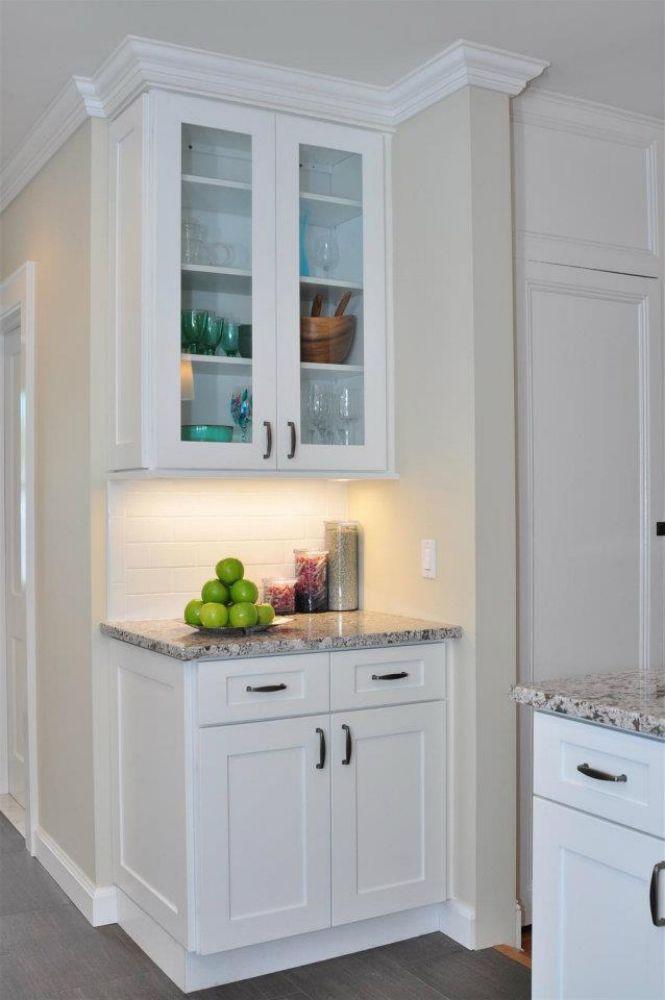Chipped paint on kitchen cabinets is a common issue that can make even the most beautiful kitchen look worn and neglected. Over time, daily use, moisture, and occasional bumps can cause small chips or larger peeling sections of paint. Fortunately, repairing chipped paint doesn’t always require a complete cabinet makeover. With the right approach, you can restore your cabinets’ smooth finish and extend their lifespan.
In this article, we’ll explore practical methods for repairing chipped paint on kitchen cabinets, discuss when it might be better to repaint entirely, and provide useful tips to keep your cabinets looking flawless.
Identifying the Type and Extent of Damage
Before jumping into repairs, it’s important to assess the type of damage. Small chips can often be fixed with minimal tools, while large or multiple chips might call for more intensive restoration. Look for the following signs:
-
Minor chips: Small areas where the paint has flaked off, usually around edges and corners.
-
Peeling paint: Larger sections lifting from the surface, often due to poor adhesion or moisture exposure.
-
Deep scratches: Cuts that expose the wood or substrate beneath the paint.
Understanding the scope of the issue will help you decide whether a quick touch-up or a more detailed repair process is required.
Tools and Materials Needed for Paint Repair
Having the right tools makes the job smoother and ensures a longer-lasting finish. Gather these materials before starting:
-
Fine-grit sandpaper (220–320 grit)
-
Putty knife or small scraper
-
Wood filler (if needed for deeper chips)
-
Touch-up paint or matching cabinet paint
-
Small artist’s brush or foam brush
-
Painter’s tape
-
Primer (for larger areas)
-
Clean cloths
These basic tools will prepare you for most types of paint repairs on cabinets.
Step-by-Step Guide to Repairing Chipped Paint
Step 1: Clean the Surface
Start by wiping down the affected area with a damp cloth to remove dust, grease, or debris. A clean surface ensures better paint adhesion.
Step 2: Sand the Chipped Area
Lightly sand around the chip to smooth out rough edges and create a uniform surface. Be careful not to over-sand, as this could damage surrounding paint.
Step 3: Fill if Necessary
If the chip is deep and exposes raw wood, apply a thin layer of wood filler. Let it dry completely before sanding it flush with the cabinet surface.
Step 4: Prime the Spot
For larger chips, apply a thin coat of primer. This prevents future peeling and helps the new paint blend seamlessly.
Step 5: Apply Touch-Up Paint
Using a small brush, apply paint in thin layers over the repaired area. Allow each coat to dry before applying the next. This helps achieve a smooth finish that blends with the existing paint.
Step 6: Blend the Edges
Feather the edges of the new paint into the surrounding surface by lightly brushing outwards. This avoids creating noticeable lines between the old and new paint.
Step 7: Let It Cure
Allow the repaired section to cure fully before exposing it to water, heavy cleaning, or frequent use.
Preventing Future Chips in Cabinet Paint
Repairing chipped paint is only half the battle. Preventing further damage is equally important. Here are some maintenance tips:
-
Use soft cloths instead of abrasive sponges for cleaning.
-
Avoid slamming doors and drawers.
-
Keep cabinets dry by wiping spills immediately.
-
Apply a protective clear coat to high-traffic areas.
-
For pet friendly homes, keep sharp pet claws away from cabinet surfaces.
By following these preventive measures, you’ll protect your investment and keep your cabinets looking fresh.
When to Repaint Instead of Repair
While small chips can easily be fixed, there are times when a full repaint may be the smarter option:
-
If multiple areas across the kitchen are chipped.
-
When paint consistently peels despite repairs.
-
If the finish has dulled and lost its original luster.
In these cases, sanding and repainting the entire set of cabinets will restore a uniform, long-lasting finish.
Why Choose Us?
At My Kitchen Cabinets, we understand how important it is to maintain beautiful, durable cabinetry in your home. Our team provides high-quality products designed for longevity, style, and ease of care. We also offer expert guidance on cabinet maintenance, making sure you have the knowledge and tools to keep your investment in top condition. Whether you’re repairing a small chip or considering a full renovation, we’re here to help you achieve the perfect kitchen look.
Conclusion
Repairing chipped paint on kitchen cabinets doesn’t need to be overwhelming. With simple tools and the right technique, you can restore their appearance and extend their life. For minor chips, touch-up paint is often enough, but for widespread damage, repainting may be the better option. Protect your cabinets with regular care, and they’ll remain a beautiful centerpiece in your home for years to come.
Frequently Asked Questions
Q: How do I repair chipped paint on kitchen cabinets?
A: Clean the surface, sand lightly, fill deep chips with wood filler, prime if necessary, then apply touch-up paint in thin layers. Finish by blending edges for a smooth look.
Q: What type of paint works best for cabinet touch-ups?
A: Use the same type and finish as the original paint. Semi-gloss or satin finishes are common, as they resist moisture and are easy to clean.
Q: Can I repair chips without sanding?
A: Small chips can sometimes be touched up directly, but sanding ensures the paint adheres properly and prevents further peeling.
Q: How can I prevent paint from chipping again?
A: Use gentle cleaning methods, avoid moisture buildup, and consider applying a clear protective coat. Also, handle cabinets carefully to reduce wear.
Q: Should I repaint all my cabinets if only a few chips are visible?
A: If damage is isolated, touch-ups are sufficient. However, if chips are widespread or the paint is old and peeling, a full repaint may be more effective.

